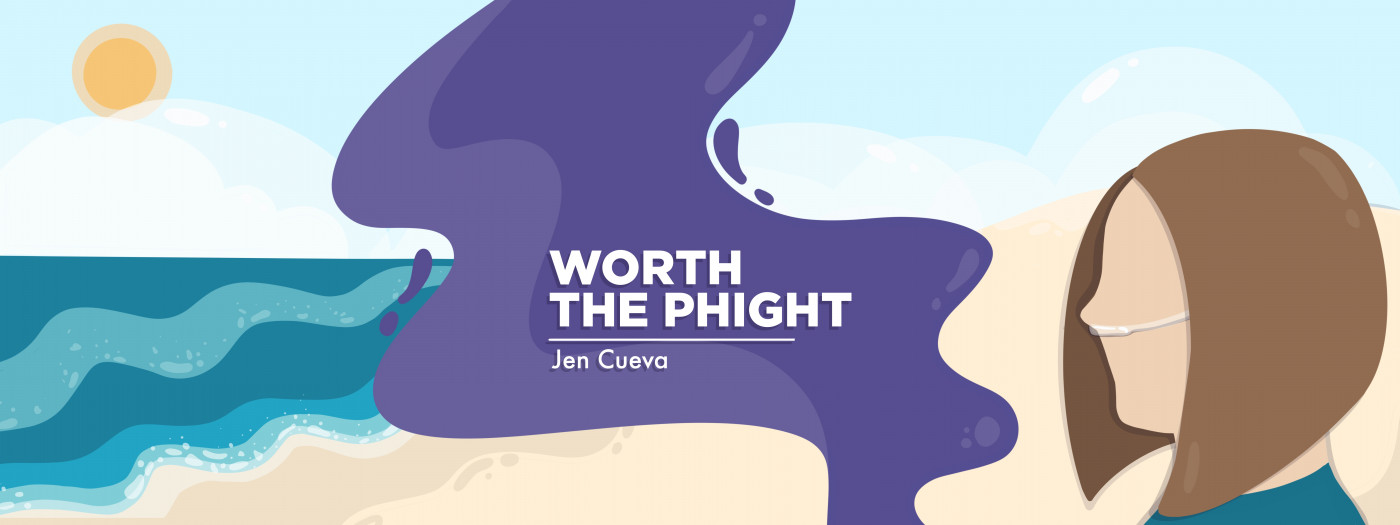Travel anxiety and adventure with pulmonary hypertension
Taking flight has its hassles, but the destinations and journeys can be rewarding

Traveling with a rare disease such as pulmonary hypertension (PH) isn’t just about booking flights and hotels; it’s an adventure full of challenges!
Once the plans are set, the actual logistics begin. Ensuring that I have all my treatments, preparing for possible emergencies, and navigating the complexities of travel can seem daunting. Even under ideal conditions, traveling can be tricky, but for those like me who are managing a disability, the security checks can be downright stressful.
This month I was honored to attend the Pulmonary Hypertension Association (PHA) International Conference with my husband, Manny. It was the first time I’d attended the conference since the pandemic. Although we knew it’d be taxing, we were grateful to participate. What’s a few long and bustling days? It was so worth it, and the excitement of the meeting will be in a future column.
Jumping through hurdles
Manny, who’s also my rock and caregiver, has been my co-pilot for the majority of my travels since my PH diagnosis. He, too, experiences anxiety as we prepare because he carries so much — literally. His first hurdle is getting us to the airport with extra time because anyone with a disability knows what goes on is never the same, even if you’ve traveled that same day with the same airline.
He not only pushes me in my wheelchair (aka my chariot), but he also juggles our luggage and backpack. Picture this: I’m seated in my chair with my portable oxygen concentrator (POC), a carry-on packed with medications, extra batteries, and a cross-body purse. As we approach check-in, we brace ourselves for the inevitable rigmarole.

Jen and her co-pilot and husband, Manny Cueva, at the Pulmonary Hypertension Association International Conference this month. (Courtesy of Jen Cueva)
Check-in and security take patience and time.
Sadly, with a POC and wheelchair in tow, online check-in isn’t an option. Even after coordinating with the accessibility department weeks in advance, we’re often bombarded with the same questions at the desk. Otherwise, consistency is a rare find, even within the same airline. Once the luggage is checked, however, we’ll have fewer bags to wrangle, and the next challenge will be security.
Will it be a breeze, or will the staff dissect my POC, oxygen tubing, and batteries, swabbing down my wheelchair in the process? If they delve into my bag, all the POC accessories and tubing will be returned in a jumble. We’re ready for the next phase after reclaiming our belongings and retying our shoes. Are you feeling stressed yet?
We hunt for our gate a few deep breaths later, aiming to be nearby when preboarding begins. If luck favors us, a coffee and snack break is in the cards, and the gate is just a short distance away. But once at the entrance, we might learn that our seat arrangements weren’t handled as promised, and of course, the plane is completely packed.
Despite contacting the airline’s accessibility services weeks before and confirming everything, including an upgrade for leg room because of my leg spasms, the message rarely reaches the flight crew. Some suggest waiting until gate check-in to request the needed seats because they’re a medical necessity. Double-checking that all accessibility requests have been communicated is crucial.
And the uncertainty doesn’t stop there. Will my meds be available at my destination? What if my PH symptoms act up? Navigating accessible restrooms and accommodations can become an epic quest. Plus, there’s the looming fear of falling ill far from home, especially if a significant hospital isn’t nearby.
I always check the PHA’s doctor locator to identify the nearest hospital with a PH center or specialist. For road trips, I map out larger hospitals along our route. Traveling with a rare or chronic illness is never easy, whether it’s a short drive or a long-haul flight. But with thorough preparation and a resilient, adventurous spirit, the journey can be as fulfilling as the destination.
Once Manny and I are comfortably settled on the plane, we take a moment to breathe. Traveling with a disability is undeniably challenging, but it doesn’t deter us from exploring the world. Having Manny by my side makes the journey more rewarding. We may face heightened stress and anxiety along the way, but reaching our destination in one piece is a shared victory we both understand.
If you travel with PH, how were your adventures? How much time do you spend ensuring all your needs are met while away? Do you journey solo or with a co-pilot?
Note: Pulmonary Hypertension News is strictly a news and information website about the disease. It does not provide medical advice, diagnosis, or treatment. This content is not intended to be a substitute for professional medical advice, diagnosis, or treatment. Always seek the advice of your physician or other qualified health provider with any questions you may have regarding a medical condition. Never disregard professional medical advice or delay in seeking it because of something you have read on this website. The opinions expressed in this column are not those of Pulmonary Hypertension News or its parent company, Bionews, and are intended to spark discussion about issues pertaining to pulmonary hypertension.









Irin Smith
This was interesting thank you for sharing Jen. We have left a couple messages for me that were helpful. My son is the one with the PAH. He is formulating a bucket list. Just quit his job for 14 years they let him work from home for the last 2 years. We were wondering how you fly because of the altitude? This being on oxygen stop the hypoxic episodes happen ing. ? This is such a devastating disease or disorder whatever you call it. What do you call it? Condition? As I've mentioned before my heart is broken into a million pieces for him. He's 53 years and I'm 72 years old.
Jen Cueva
Dear Irin,
Thank you deeply for dedicating your time to read my column on navigating the complexities of travel anxieties. It warms my heart to connect over such a personal topic.
Regarding your son's adventurous spirit and his bucket list, the decision greatly depends on his specific oxygen needs and the guidance of his dedicated PH team on whether it's safe for him to travel by air with supplemental oxygen. Airplane cabins are pressurized environments, which can sometimes mean individuals who don't usually require oxygen might not need it for flying. Personally, I rely on my portable oxygen concentrator (POC) for travel, as I've shared in my column. Despite a few challenging years where my health restricted any possibility of flying, I've been fortunate to navigate almost two decades with this condition, with only a brief period where travel was not an option.
As a mother, my heart reaches out to you with understanding and compassion. Please rest assured that with a skilled PH team and the right treatments, there are numerous possibilities to alleviate the symptoms of PH, bringing some comfort to your son's journey. Knowing he is close to my age and that you are navigating this nearly twenty years into my own diagnosis, I feel a deep connection to your story.
If you haven't had the chance to join our forums, I encourage you to do so. There, you'll find countless stories from others navigating similar paths, offering their support and wisdom. It's a place of understanding and camaraderie, and I look forward to welcoming you into our community.
PH News Forums
Though PH is often termed a rare disease, it's your personal journey and you define it in the way that feels right for you and your son. I'm truly sorry to hear of the challenges you both face, but please know, you are not alone. We are here to support you, answer any questions you may have, and stand with you every step of this journey.